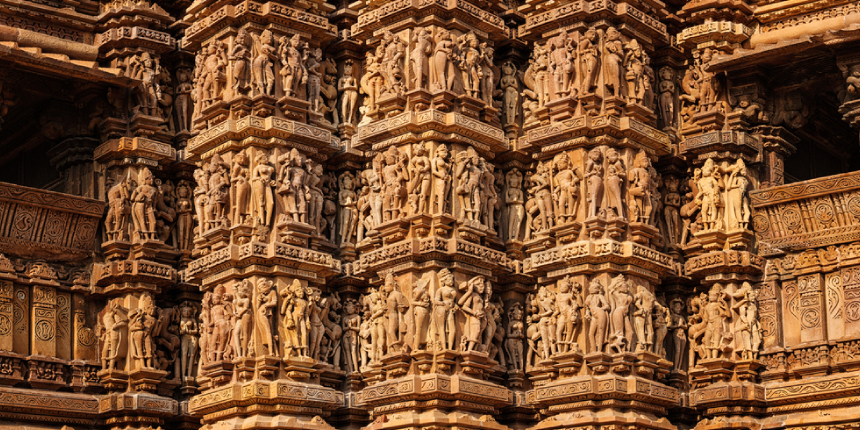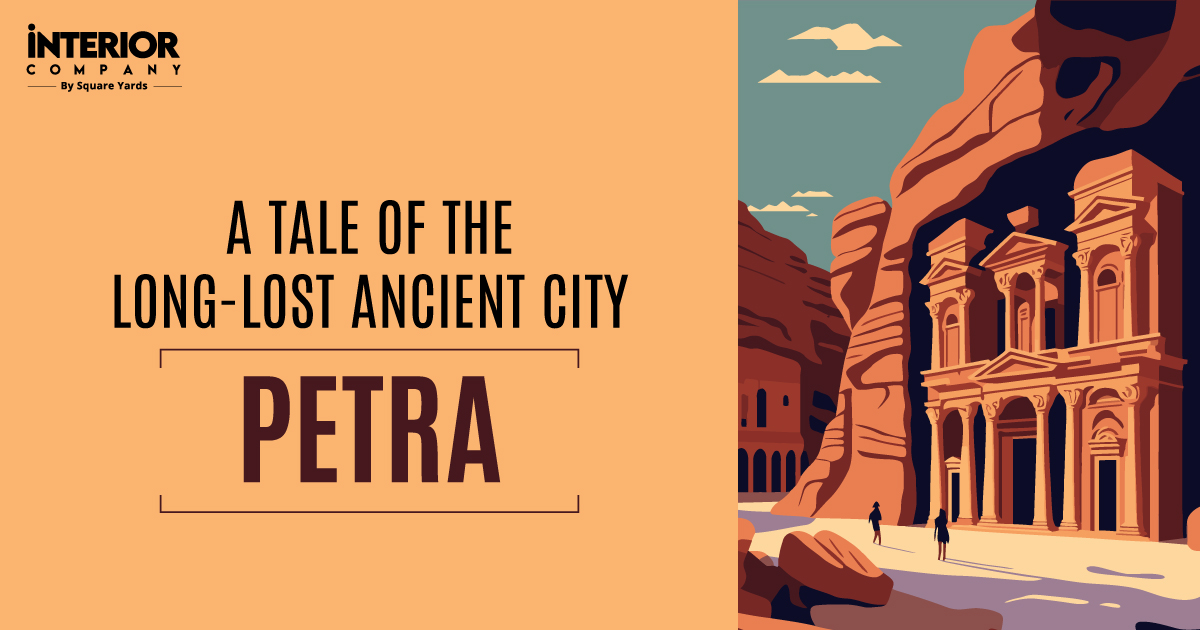- Kitchens
- Design Ideas
- Cities
- Trends
- Guides
- Price Calculators
- Our PortfolioNEW
- More
- Home
- Trends
- Architecture
- Buildings
- Khajuraho A Nagara Architecture
Khajuraho- A Nagara Architectural Marvel and a Sculpture Masterpiece of India
Located in the extremes of Northeastern Madhya Pradesh is a town named Chhatarpur. Chhatarpur was founded in 1785 under the name of Chhatrasal who was the founder of Bundelkhand. It was first occupied by the Rajputs and later on by the British. However, the importance of Chhatarpur goes back to 885 CE. This city is a goldmine of Indian history, art, culture and architecture. In Chhatarpur stand the world-famous Khajuraho monuments. Khajuraho Temples are a collection of Hindu and Jain temples with eminent Nagara-style Architecture. The temples have exceptional erotic sculptures and depictions of ancient Indian history. The nagara-style architecture with the blend of brilliant sculptures calls everyone to Madhya Pradesh at least for one visit. The United Nations Educational, Scientific and Cultural Organization has recognised Khajuraho Temples as a World Heritage Site. In this article, we will dive into the story behind Khajuraho Temples.
Table of Content
History of Khajuraho

The temples of Khajuraho were built between 885 CE to 1000 CE by the rulers of the Chandela Dynasty. The dynasty was prominent in Central India and mainly ruled Bundelkhand from the 9th-13th century. Their lineage is traced back to the Chandravansha or the Lunar Dynasty. The inscriptions found in the area speak highly of various wins of the Chandela dynasty. The magnificent temples we see today in Khajuraho saw their inception during the reign of Yashovarman. The Lakshmana Temple was the first temple to be commissioned by Yashovarman. The first documentation of Khajuraho was made in 641 CE by a Chinese pilgrim Xaunzang, who found out that the temple was once a residence of monks and brahmins. The temple was raided by Ghazni and was paid ransom to stop the attack. During the time of the Delhi Sultanate, the temples ceased to be used due to Qutub-Uddin Aibak's attack on the Chandel King. The famous Moroccan traveller Ibn Battuta has explicitly mentioned the beauty of the Khajuraho group of monuments in his accounts. Most temples were reduced to disintegrated pieces of art when Sikander Lodi announced the destruction of temples under his reign.
Also Read: Golden Temple Art and Architecture
Nagara Style of Architecture

Nagara style of architecture is a style of Hindu temple architecture that originated in India during the 6th century CE. This style is found mostly in the Western and Northern regions of the Indian subcontinent. The Nagara style is characterised by its distinctive tower-like structure, known as a shikhara, which is often curved and has an onion-like dome shape. The walls of the temple are usually adorned with sculptures and intricate designs. The sculptures at Khajuraho are especially famous for the erotic imagery depicting Gods. The temples are typically constructed out of stone or brick and are often covered in stucco or plaster. The Nagara style is divided into two distinct types: the Northern Nagara style and the Southern Nagara style. The Northern Nagara style is known for its tall, tower-like structures, while the Southern Nagara style is characterised by its shorter, pyramid-like structures. The most common features of the Nagara style of architecture include the shikhara, which is the tall, curved tower that rises from the roof of the temple; the Mandapa, which is the pillared hall that is used for religious ceremonies and rituals; and the garbhagriha, which is the inner sanctum of the temple and houses the main deity. The towers, walls, and other parts of the temple are often intricately decorated with sculptures, carvings, and paintings. The Nagara style of architecture is one of the most popular styles in India and is found in many temples across the country. Some of the most famous temples in the Nagara style of architecture include the Kailash Temple in Ellora, the Brihadeeswara Temple in Thanjavur, and the Virupaksha Temple in Hampi.
Also Read: Architecture Udaipur City Palace
Sculptures of Khajuraho

The Khajuraho temples are a group of Hindu and Jain temples in Madhya Pradesh, India. They are renowned for their erotic sculptures, which depict various scenes of love and desire. The sculptures, which are among the most erotic in India, range from depictions of everyday life to explicit sexual scenes. They are believed to be a representation of the union between the human and the divine. The temples are also known for their intricate carvings and sculptures, which depict deities, animals, and geometric shapes. The sculptures of Khajuraho are viewed by everyone differently. Materials used to carve these sculptures are sandstone and granite with a tinge of pink, yellow and brown.
Group of Temples

There are several temples across the compound of the Khajuraho monuments. They are mentioned below in the table.
| S no. | Modern temple name | Temple Type | Deity | Completed by(CE) |
| 1 | Chausath Yogini | Hindu | Devi, 64 Yoginis | 885 |
| 2 | Lalguan Mahadev | Hindu | Shiva | 900 |
| 3 | Brahma Temple | Hindu | Shiva | 925 |
| 4 | Lakshmana | Hindu | Vaikuntha Vishnu | 939 |
| 5 | Varaha | Hindu | Varaha | 950 |
| 6 | Parshvanatha | Jain | Parshvanatha | 954 |
| 7 | Ghantai | Jain | Adinatha | 960 |
| 8 | Mahishasuramardini | Hindu | Parvati | 995 |
| 9 | Vishvanatha | Hindu | Shiva | 999 |
| 10 | Matangeshwar | Hindu | Shiva | 1,000 |
| 11 | Vishnu-Garuda | Hindu | Vishnu | 1,000 |
| 12 | Beejamandal Temple ruins | Hindu | Shiva | 1,000 |
| 13 | Ganesha | Hindu | Shiva | 1000 |
| 14 | Jagadambi | Hindu | Devi Jagadambi | 1023 |
| 15 | Chitragupta | Hindu | Shiva | 1023 |
| 16 | Adinath Temple | Jain | Adinatha | 1027 |
| 17 | Shantinatha temple | Jain | Shantinatha | 1027 |
| 18 | Kandariya Mahadeva (the largest temple) | Hindu | Shiva | 1029 |
| 19 | Vamana | Hindu | Vamana | 1062 |
| 20 | Javeri | Hindu | Shiva | 1090 |
| 21 | Chaturbhuja | Hindu | Vishnu | 1110 |
| 22 | Duladeo (Duladeva) | Hindu | Shiva | 1125 |
Conclusion
The Khajuraho Temples are quite remarkably, a testament to Indian culture and artistry. This style of architecture is carried out in the temples that are built even today. The sculptures of Khajuraho tell a lot about how uncensored art used to be in the olden times, an act which is diving into the sea of oblivion these days. Khajuraho group of temples have stood the test of time by being invaded and torpedoed over several centuries. These temples are the testaments of how ancient art and architecture have shaped the country to its present glory.
*Images used are for illustration purposes only. Interior Company does not hold any copyright to the images unless mentioned explicitly.
Ready for a home transformation?
Let our designers assist you!
Recent Posts
Yes, Khajuraho is a World Heritage site.
No, Khajuraho is not a Wonder of the World.
Related Category
- Bedroom
- Exterior Design
- Kitchen
- Living Room
- Paint and Color



































